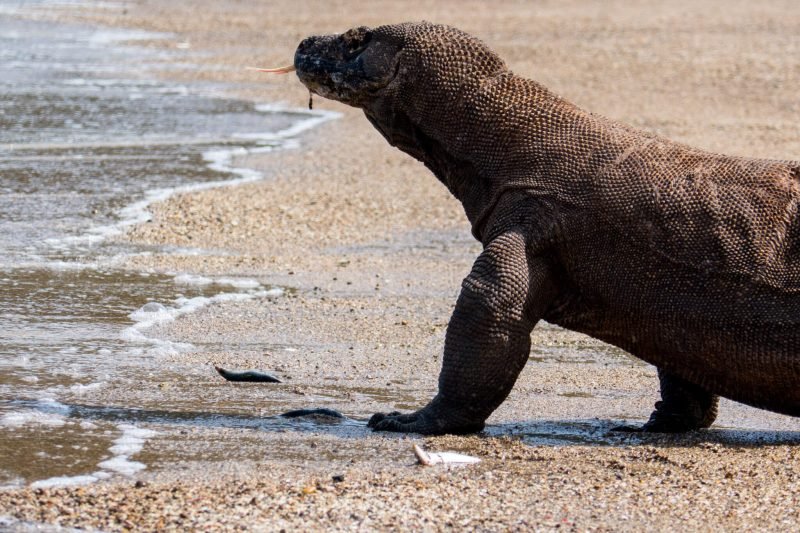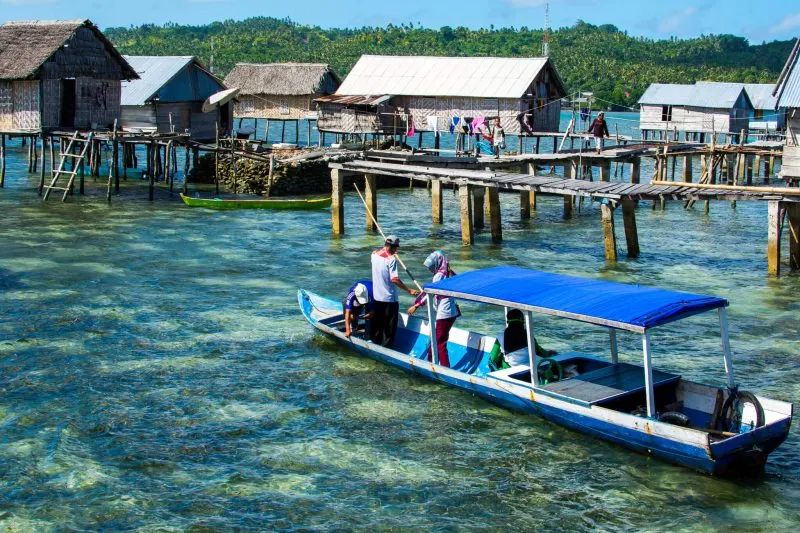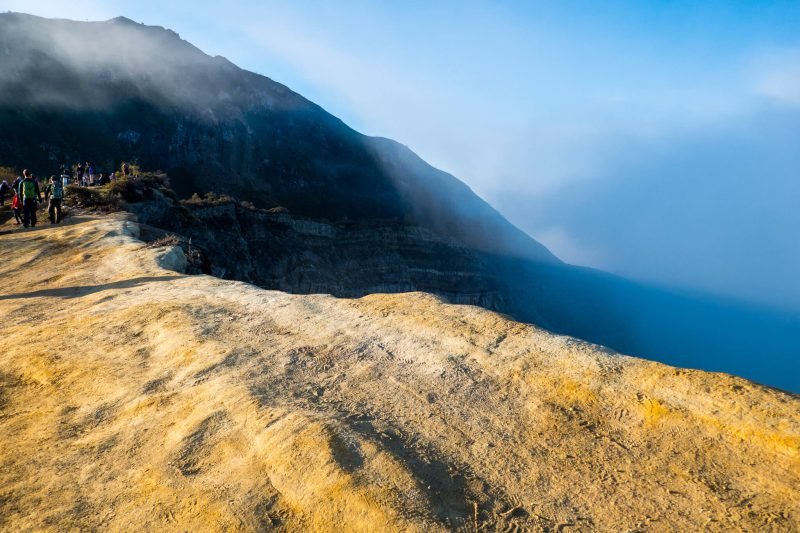Indonesia isn’t short on spectacle. From the ancient dragons of Komodo to volcano-silhouetted sunrises in Java, it remains one of the most experience-rich destinations in the world. However, as travel returns with a sharper focus on sustainability and depth, the best Indonesian adventures in 2025 are a mix of the iconic and the immersive – from rainforest hikes to village festivals and quiet archipelagos off the tourist radar.
This guide brings together 11 must-do experiences, with local insights, best seasons to go, and tips for making the most of each one, responsibly and safely.
Meet the Komodo Dragons in Their Native Habitat
One of the planet’s last living dinosaurs, the Komodo dragon is found only on a few islands in East Nusa Tenggara. Rangers now enforce strict visitor caps, especially during mating season (July–August), so book early and consider shoulder months like March–June for better weather and fewer crowds. Stay in Labuan Bajo and take guided boat tours to Rinca or Komodo Island.
Best Time: March–June
Pre-register online 24–48 hours before visiting
Trek the Caldera of Mount Bromo
In East Java, Mount Bromo is one of Indonesia’s most accessible volcano treks — and one of its most photogenic. Start your ascent pre-dawn for a surreal sunrise over a sea of clouds. It’s cold at the top (yes, cold in Java), so pack layers. Jeep tours from Cemoro Lawang are popular, but self-guided hikes are possible with clear signage and good daylight.
Best Time: May–September
Highlight: Combine with a visit to the nearby Tenggerese villages
Sleep in a Traditional House in Wae Rebo
Hidden in the Flores highlands, Wae Rebo is an award-winning heritage village reachable only by a 3-hour jungle trek. Visitors stay in thatched cone-shaped houses with local families and share meals cooked over fire. This is cultural preservation in action — and one of Indonesia’s most rewarding off-grid stays.
Best Time: May–October
Bring: Cash, sturdy shoes, and humility

Climb Ijen to See the Electric-Blue Flames
Mount Ijen, also in East Java, offers one of the rarest sights on Earth – blue sulfur flames dancing across the crater in the early hours. Combine it with a respectful visit to the sulfur miners who work the crater walls.
Note: Tours now promote eco-conscious practices to minimize crowding and protect both workers and the environment.
Best Time: April–September
Highlight: Wear a proper gas mask (not just a cloth one)
Requirements by Travelindonesia-ecd outline what you’ll need to enter Indonesia, including the mandatory customs and health declaration form for international travelers.
While you can complete the form on the official government site, using a service like this can make the visa process faster and more straightforward.
Island-Hop the Forgotten Banda Sea
The Banda Islands are a remote chain in Maluku, full of spice trade history, coral reefs, and almost no crowds. Expect Dutch forts, diving with hammerhead sharks, and nightly dinners with host families. Flights can be irregular, so build buffer days into your itinerary.
Best Time: March–May or September–November
Transport: Ferry from Ambon or chartered boats
Experience the Rainforest of Gunung Leuser
One of the few places on Earth to see orangutans in the wild, Gunung Leuser National Park (in North Sumatra) is a biodiversity hotspot. Stay in Bukit Lawang and trek into the jungle with certified guides. The park also houses tigers, gibbons, and hornbills.
Best Time: May–September
Tip: Go with guides certified by HPI (Indonesian Guide Association)
Join a Local Festival in Tana Toraja
In South Sulawesi, Tana Toraja is famous for its cliffside tombs and elaborate funeral ceremonies, which are open to respectful visitors. These are not grim events — they are complex, communal expressions of culture. Homestays offer full cultural immersion.
Best Time: June–August (ceremony season)
Bring: Modest clothing, local gifts, and an open mind

Dive the Coral Triangle in Raja Ampat
This marine reserve is often called Earth’s final underwater frontier. Biodiversity here is staggering — from pygmy seahorses to manta rays. To preserve the reefs, tourism is now capped in some zones, and eco-resorts require minimum-night bookings to manage carbon footprints.
Best Time: October–April
Access: Fly into Sorong, take a ferry to Waisai
Explore the Sand Dunes of Yogyakarta
Gumuk Pasir, near Parangtritis Beach, is a stretch of volcanic dunes you can sandboard, hike, or shoot surreal landscape photos in. It’s a rare inland desert experience in a tropical country. Combine it with a visit to nearby temples like Prambanan.
Best Time: June–August (dry season)
Tip: Sunset offers the best lighting
Cycle the Rice Terraces of Ubud
Yes, Ubud is well-traveled – but cycling through its terraced rice fields still offers peace and postcard views. Rent a bike, start early, and stop by roadside warungs (cafes) for coconut water and snacks. Go during the planting or harvesting seasons for a greener, more dramatic landscape.
Best Time: March–April or September
Tip: Avoid weekends, start at sunrise
Kayak Through the Karst Islands of Misool
Located in southern Raja Ampat, Misool is where limestone cliffs rise from turquoise waters in jagged, cinematic formations. Paddling through them at sunrise is as peaceful as Indonesia gets. Misool is also home to a leading marine conservation center — stay at an eco-resort or dive homestay.
Best Time: November–March
Entry: A Protected area fee is required before arrival
Plan Smart, Travel Slow
Indonesia is vast, and many of these experiences are days apart. A flexible, visa-supported itinerary helps you travel deeper. Start your visa application early to avoid delays, especially if you’re planning to hop islands or stay longer than 30 days.
For the best experience, travel in shoulder months like March–June or September–November. You’ll beat the crowds, catch good weather, and often see a more relaxed, open side of each destination.
Are you ready for your next Indonesian adventure?

